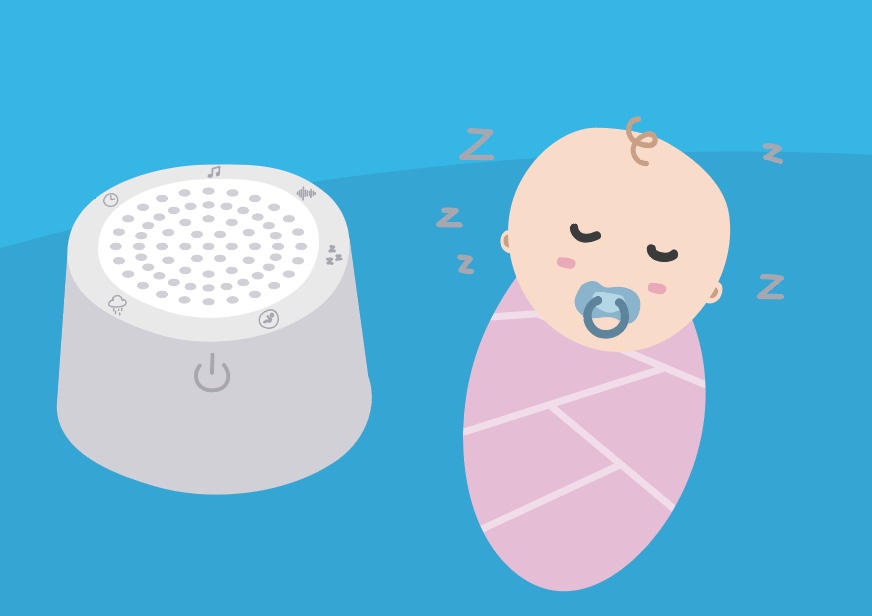By Madison Gwizdalski MS, CCC-SLP
There’s been a lot of noise recently regarding whether the use of sounds machines is helpful or harmful to babies. Many families swear by them, while others have sworn off them. We will walk you through the pros and cons of these machines, and provide you with some tips on how to use them safely.
Getting a full night’s rest can seem like a myth once you have a newborn. Most of us could use a little help as we learn to care for our babies, especially in the area of sleep. So… how does white noise help? Here is how a white noise machine can help soothe and prolong your baby’s sleep:
- White noise creates “a blanket of sound” that can drown out noises that typically wake us up.
- White noise reminds newborns of their original home, the womb! During gestation, your baby gets to listen to 9 months of calming, constant music. Babies find comfort in what is familiar to them.
- It helps activity your baby’s calming reflex! These “5 S’s” can help soothe babies who are upset – swaddling, side or stomach position, shushing, swinging, and sucking. White noise is the same concept as “shushing” your baby. The “shhh” sound that we tell babies who are fussy or crying also mimics the sound of blood flow in the womb.
So there seem to be a lot of benefits… what’s the catch? Let’s look at some of the research out there on white noise machines impact on your baby’s speech, language, and hearing development.
- In a 2014 study by Dr. Sarah Hugh and colleagues in the journal Pediatrics, they found that 14 of 14 machines tested exceeded 45 decibels, with some going up to 85 decibels (for reference…. 85 dB is comparative to a noisy restaurant, or slightly quieter than an alarm clock).
- Researchers noted that if these machines were played at their maximum level for 8 hours straight, they could lead to hearing loss.
- In a 2017 study by Selehi et al, rats were exposed to 2 hours of 90 dB sound in utero and in the newborn stage.
- Researchers noted changes in the central auditory system of the brain of these rats; in humans, the central auditory system is responsible for processing sound for developing language.
- There are some concerns that white noise machines might distract babies from what they are “supposed to do.”
- Babies need to wake up often to feed; if we try to get them to sleep longer, they may miss out on important nutrition!
- Biologically, this is because they have tiny tummies and therefore need to eat every 2-4 hours to support growth and development.
- Furthermore, when white noise is used outside of bedtimes, there is some thought that it could detract from a baby or toddler’s attention to the sounds of speech. This “background noise” could compete with important speech patterns that help your child learn language, either muting them or muffling the intended message.
So… how can we safely use the machines to soothe our little ones? Here are some tips we’ve compiled on how to use your white noise machine while protecting hearing and speech development:
- Place the machine 7 ft from the crib.
- Keep the volume lower than the maximum setting, and generally no higher than 50 dB
- Another option is to you can start with the volume at 50 dB while your child is falling asleep, and decrease once they are asleep.
- Continue to follow recommended wake-sleep patterns so that your baby is feeding adequately.
- Monitor your baby’s sleep with the sound machine, to ensure that it’s not causing any discomfort.




